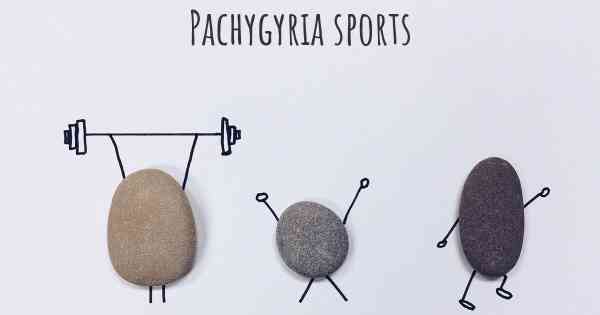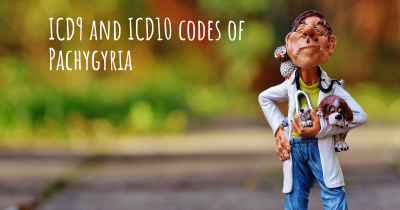Is it advisable to do exercise when affected by Pachygyria? Which activities would you suggest and how intense should they be?
See if it is advisable for people with Pachygyria to practice sports and which ones are the most recommended if you have Pachygyria

Pachygyria is a rare neurological condition characterized by abnormal brain development, specifically the formation of unusually thick and broad gyri (folds) in the cerebral cortex. This condition can lead to various motor and cognitive impairments, including muscle weakness, developmental delays, and intellectual disabilities. While exercise may not directly treat or cure pachygyria, it can still play a crucial role in managing the symptoms and improving overall well-being.
Before starting any exercise program, it is essential to consult with a healthcare professional or physical therapist who can assess your specific condition and provide personalized recommendations. They will consider factors such as the severity of your pachygyria, associated complications, and any other health considerations.
Once you have received medical clearance, there are several types of exercises that can be beneficial for individuals with pachygyria:
- Range of motion exercises: These exercises aim to improve flexibility and maintain joint mobility. They involve gentle movements that take joints through their full range of motion. Examples include shoulder circles, ankle pumps, and wrist stretches. Range of motion exercises can help prevent muscle stiffness and contractures, which are common in individuals with pachygyria.
- Strength training: Strengthening exercises can help improve muscle tone and overall strength. It is important to start with low resistance and gradually increase as tolerated. Resistance bands, light weights, or bodyweight exercises can be used. Focus on targeting major muscle groups, such as the legs, arms, and core. A physical therapist can guide you in selecting appropriate exercises and ensuring proper form.
- Aerobic exercises: Aerobic or cardiovascular exercises are beneficial for cardiovascular health, weight management, and overall well-being. Low-impact activities like walking, swimming, cycling, or using an elliptical machine are generally well-tolerated. Start with shorter durations and gradually increase the intensity and duration as your fitness level improves. It is important to listen to your body and avoid overexertion.
- Balance and coordination exercises: Pachygyria can affect balance and coordination, making activities like walking or maintaining stability challenging. Incorporating exercises that target balance, such as standing on one leg or using a balance board, can help improve stability and reduce the risk of falls. Coordination exercises, such as tossing and catching a ball or using hand-eye coordination games, can also be beneficial.
- Stretching: Regular stretching exercises can help improve flexibility, prevent muscle tightness, and reduce the risk of contractures. Focus on stretching major muscle groups, such as the hamstrings, quadriceps, calves, and chest. Hold each stretch for 15-30 seconds and repeat several times. Avoid bouncing or forcing a stretch, as it can lead to injury.
It is important to note that the intensity and duration of exercise should be tailored to each individual's abilities and limitations. Start with shorter sessions and gradually increase as tolerated. Listen to your body and stop any exercise that causes pain or discomfort. It is also crucial to stay hydrated, wear appropriate footwear, and use any assistive devices if needed.
Remember, exercise should be a part of a comprehensive treatment plan that includes other interventions such as physical therapy, occupational therapy, and medication management if necessary. Regular communication with healthcare professionals is essential to monitor progress, address any concerns, and make necessary adjustments to the exercise program.








